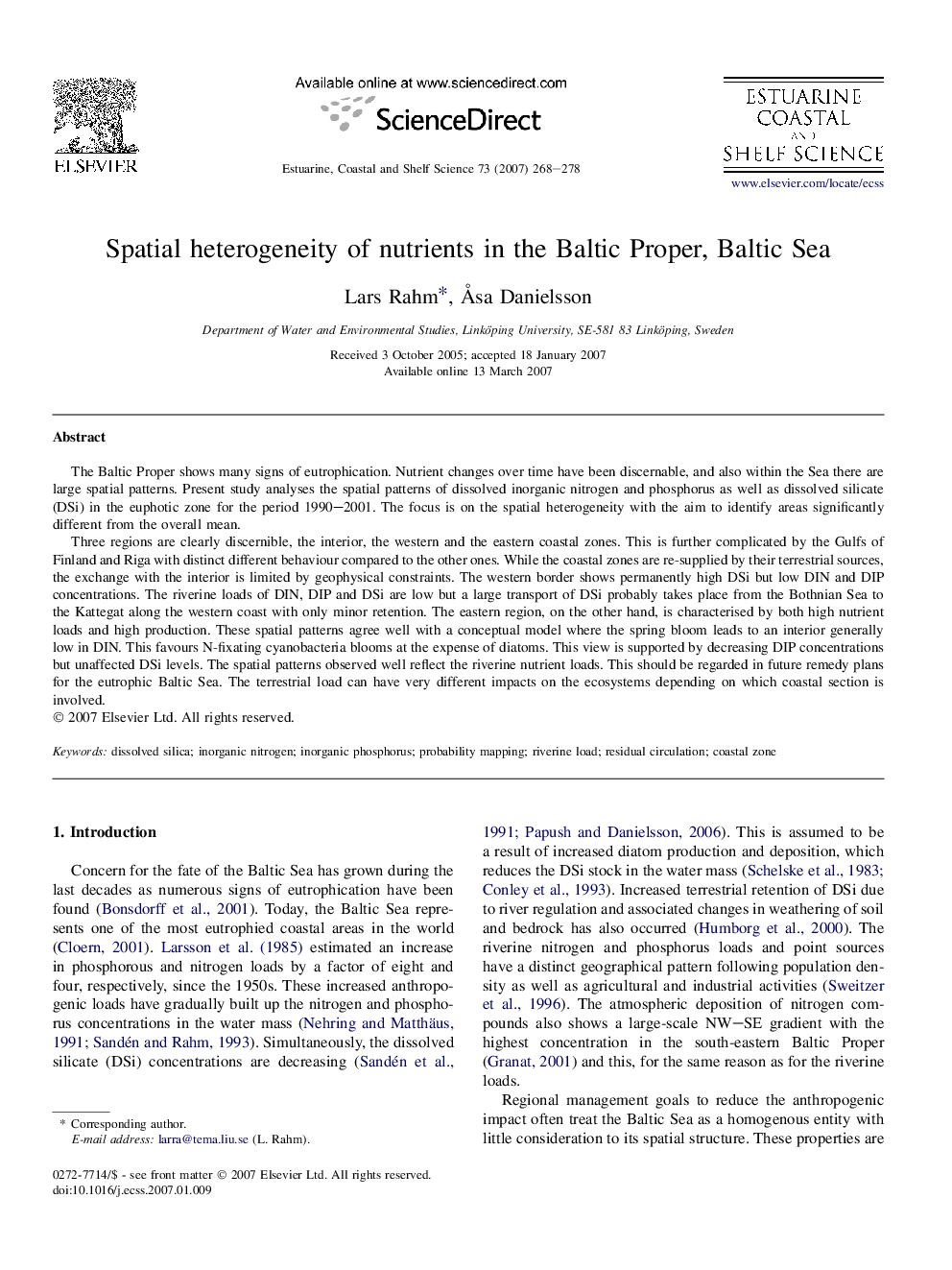| Article ID | Journal | Published Year | Pages | File Type |
|---|---|---|---|---|
| 4541979 | Estuarine, Coastal and Shelf Science | 2007 | 11 Pages |
The Baltic Proper shows many signs of eutrophication. Nutrient changes over time have been discernable, and also within the Sea there are large spatial patterns. Present study analyses the spatial patterns of dissolved inorganic nitrogen and phosphorus as well as dissolved silicate (DSi) in the euphotic zone for the period 1990–2001. The focus is on the spatial heterogeneity with the aim to identify areas significantly different from the overall mean.Three regions are clearly discernible, the interior, the western and the eastern coastal zones. This is further complicated by the Gulfs of Finland and Riga with distinct different behaviour compared to the other ones. While the coastal zones are re-supplied by their terrestrial sources, the exchange with the interior is limited by geophysical constraints. The western border shows permanently high DSi but low DIN and DIP concentrations. The riverine loads of DIN, DIP and DSi are low but a large transport of DSi probably takes place from the Bothnian Sea to the Kattegat along the western coast with only minor retention. The eastern region, on the other hand, is characterised by both high nutrient loads and high production. These spatial patterns agree well with a conceptual model where the spring bloom leads to an interior generally low in DIN. This favours N-fixating cyanobacteria blooms at the expense of diatoms. This view is supported by decreasing DIP concentrations but unaffected DSi levels. The spatial patterns observed well reflect the riverine nutrient loads. This should be regarded in future remedy plans for the eutrophic Baltic Sea. The terrestrial load can have very different impacts on the ecosystems depending on which coastal section is involved.
